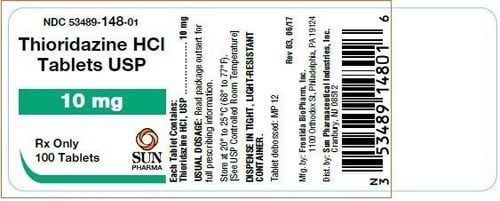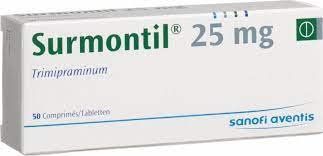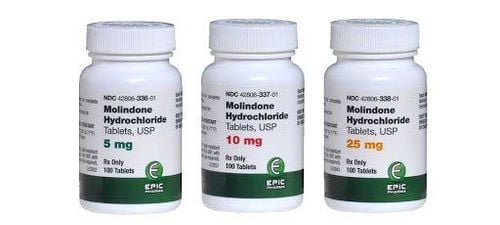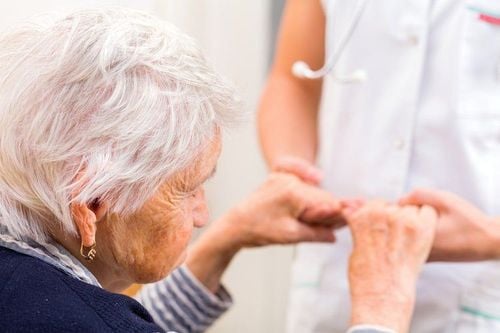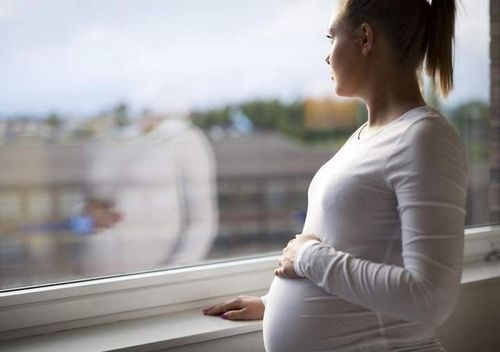This is an automatically translated article.
Childhood schizophrenia is a serious mental disorder. The disease causes a range of cognitive, behavioral, and emotional problems. Children with schizophrenia need to be detected, diagnosed and treated early to help improve the disease and help children integrate into the community better.1. What is childhood schizophrenia?
Childhood schizophrenia is an uncommon but serious mental disorder. Illness involves a variety of thinking (cognitive), behavioral, or emotional problems. It can lead to some combination of hallucinations, delusions, and extremely disturbed thinking and behavior that impair the child's ability to function.Childhood schizophrenia is essentially the same as adult schizophrenia, but it occurs early and has a profound impact on a child's behavior and development. With childhood schizophrenia, the age of early onset presents special challenges in diagnosis, treatment, education, emotional and social development.
Schizophrenia is a chronic illness that requires lifelong treatment. Diagnosing and initiating treatment for schizophrenia in children as early as possible can significantly improve a child's long-term treatment outcomes.
2. Symptoms of schizophrenia
2.1 Early signs and symptoms The earliest signs of schizophrenia in children can include developmental problems such as:Language delay Children crawling late or abnormal Children walking late Behaviors other abnormal movement such as shaking or banging of the arm Some of these signs and symptoms are also common in children with autism spectrum disorder . Therefore, ruling out this developmental disorder is one of the first steps in diagnosing the disease.
2.2 Symptoms in Adolescents
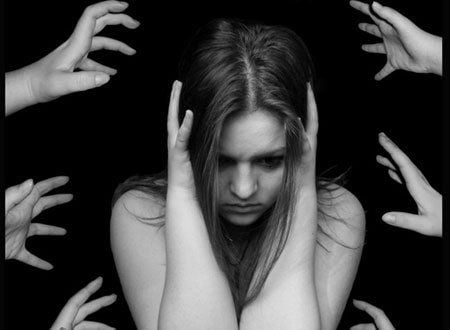
Các triệu chứng tâm thần phân liệt ở thanh thiếu niên tương tự như ở người lớn
Taking money from friends and family Reduced academic performance at school Difficulty sleeping Irritated or depressed mood Lack of motivation Strange behavior Substance use Compared with symptoms of schizophrenia in adults, adolescents may be:
Less delusional More likely to have more hallucinations 2.3 Later signs and symptoms When a child has schizophrenia, the typical signs and symptoms of the disorder begin to appear. Signs and symptoms may include:
Delusions: These are false beliefs that are not based on reality. For example, you think you are being harmed or harassed, there are certain gestures or opinions directed at you, you have special abilities or fame, someone else is in love with you, or a great disaster is about to happen. Delusions occur in most people with schizophrenia. Hallucinations: Hallucinations often involve seeing or hearing things that don't exist. However, for people with schizophrenia, the hallucinations are triggered by a normal life experience. Hallucinations can occur in any of the senses, with hearing voices being the most common. Disorganized thinking: Disorganized thinking is inferred from disorganized speech. Effective communication can be impaired, and answers to questions may be partially or completely unrelated. Speech may include concatenation of meaningless words that cannot be understood. Extremely disorganized or abnormal motor behavior: Symptoms manifest in a variety of ways, from childlike alertness to unpredictable agitation. Distracted behavior that makes it difficult to carry out tasks, resistance to instructions, inappropriate or bizarre posture, complete lack of reaction or unhelpful movements, and excessive level. Negative symptoms: This refers to a decrease in the ability to function normally. For example, the person may neglect personal hygiene or show a lack of emotion, not making eye contact, not changing facial expressions, speaking in a monotone without adding hand or head movements. In addition, the person may have reduced ability to participate in activities such as loss of interest in daily activities, lack of pleasurable experiences.
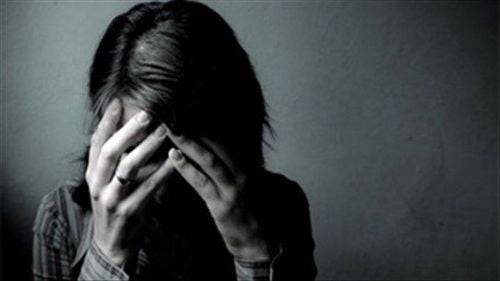
Các triệu chứng của tâm thần phân liệt bao gồm: Ảo tưởng, Ảo giác, Suy nghĩ vô tổ chức, Hành vi vận động vô tổ chức/bất thường và Triệu chứng âm tính
As time goes on, symptoms may become more severe and noticeable. Eventually, the child may develop symptoms of psychosis, including hallucinations, delusions, and trouble thinking. As thoughts become more disorganized, it often causes "escape from reality" (psychosis), which often requires hospitalization and drug treatment.
3. Diagnosis of schizophrenia
Diagnosis of schizophrenia in children includes ruling out other mental health disorders and identifying symptoms that are not due to substance abuse. The diagnostic process may include:Physical exam: A physical exam is done to rule out other problems that may be causing the symptoms and to check for associated complications. Tests and screenings: Includes tests to help rule out diseases with similar symptoms, alcohol and drug screens. Your doctor may also order imaging tests such as an MRI or CT scan. Psychological assessment: Includes observations of appearance, attitudes, questions about thoughts, feelings, and behaviors, including any thoughts of self-harm or harming others, assessment of ability to think and function at an age-appropriate level and to assess anxiety and psychotic symptoms. The doctor may also ask about the child's and family medical history. Diagnostic criteria for schizophrenia: Psychiatrists may use the criteria in the Diagnostic and Statistical Manual of Mental Disorders (DSM-5), published by the American Psychiatric Association. Period in the process of disease diagnosis. The diagnostic criteria for schizophrenia in children are generally the same as for schizophrenia in adults. The path to diagnosing schizophrenia in children can be long and challenging. Part of that is because it's difficult to distinguish it from some other similar illnesses like depression or bipolar disorder. Doctors may need to monitor a child's behavior, cognition, and thinking for 6 months or more before making a diagnosis. In some cases, a psychiatrist may recommend that you start a child on medication before a formal diagnosis is made, especially for symptoms of harm to others or self-injury.
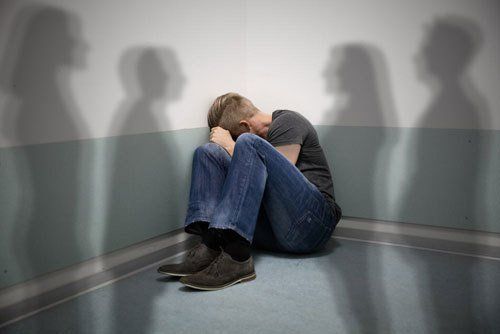
Con đường chẩn đoán tâm thần phân liệt ở trẻ em có thể dài và đầy thách thức
4. Treatment of schizophrenia
Treatment of schizophrenia in children is lifelong, even during times when symptoms seem to go away. Treatment of schizophrenia in children is usually directed by an experienced child psychiatrist and other staff. The treatment team may include:Psychiatrist, psychologist or other therapist Psychiatric nurse Social worker Family members Pharmacist Care worker Some treatments include :
4.1 Drugs Most antipsychotics used in children are the same as those used in adults with schizophrenia . Antipsychotics are often effective in controlling symptoms such as delusions, hallucinations, loss of motivation, and lack of emotion.
The goal of antipsychotic treatment is to effectively control symptoms at the lowest possible dose. Over time, your doctor may try different combinations of medications or different doses. Depending on the symptoms of the disease, other drugs such as antidepressants or anti-anxiety drugs may be combined. It may take several weeks after starting the medication to see an improvement in symptoms.

Hầu hết các thuốc chống loạn thần được sử dụng ở trẻ em cũng giống như những thuốc được sử dụng cho người lớn bị tâm thần phân liệt
Individual therapy : Psychotherapies such as cognitive behavioral therapy can help children learn to cope with stress and daily life challenges due to mental illness. schizophrenia brings. Therapy can help reduce symptoms, help children make friends, and do well in school. Learning about schizophrenia can help children understand the condition, cope with symptoms, and stick to a treatment plan. Family therapy: Therapy that provides support and health education can have many benefits for children and families. Family members who care, care and understand schizophrenia in young children will have many advantages in the process of child care. Family therapy can also help children and families improve communication, resolve conflicts, and deal with stress related to a child's medical condition. 4.3 Life skills training The treatment plan includes building life skills that can help the child function at an age appropriate level. Skills training may include:
Social and academic skills training: Social and academic skills training is an important part of the treatment of schizophrenia in children. Children with schizophrenia often have a lot of trouble and problems at school. Children may have difficulty performing everyday tasks such as bathing or dressing. Rehabilitation and employment support: Focused on helping people with schizophrenia prepare for, find, and keep work. During times of crisis or severe symptoms, hospitalization may be required. This can help ensure your baby's safety and make sure he's getting the right nutrition, sleep, and hygiene. Sometimes, hospitalization is the safest and best way to get symptoms under control quickly.
Please dial HOTLINE for more information or register for an appointment HERE. Download MyVinmec app to make appointments faster and to manage your bookings easily.
Reference source: Mayoclinic.org.



